Louis IV (German: Ludwig; 1 April 1282 – 11 October 1347), called the Bavarian, of the house of Wittelsbach, was King of the Romans from 1314, King of Italy from 1327, and Holy Roman Emperor from 1328.
Louis IV was Duke of Upper Bavaria from 1294/1301 together with his elder brother Rudolf I, served as Margrave of Brandenburguntil 1323, as Count Palatine of the Rhine until 1329, and he became Duke of Lower Bavaria in 1340. He obtained the titles Count ofHainaut, Holland, Zeeland, and Friesland in 1345 when his wife Margaret inherited them.
Louis was born in Munich, the son of Louis II, Duke of Upper Bavaria and Count Palatine of the Rhine, and Matilda, a daughter of King Rudolph I.

Beatrice of Silesia (also known as Beatrice of Świdnica; Polish: Beatrycze Świdnicka, German: Beatrix von Schweidnitz ; 1290 – 25 August 1322), was a Polish princess member of the House of Piast in the Silesian branch of Jawor-Świdnica and by marriage Duchess of Bavaria and German Queen.
She was the second daughter of Bolko I the Strict, Duke of Jawor-Świdnica, by his wife Beatrice, daughter of Otto V, Margrave of Brandenburg-Salzwedel.[1][2]

Frederick II (or III) (13 December 1272 – 25 June 1337) was the regent (from 1291) and subsequently King of Sicily from 1295 until his death. He was the third son of Peter III of Aragon and served in the War of the Sicilian Vespers on behalf of his father and brothers, Alfonso ΙΙΙ and James ΙΙ. He was confirmed as King of Trinacria (another name for the island of Sicily) by the Peace of Caltabellotta in 1302. His reign saw important constitutional reforms: the Constitutiones regales, Capitula alia, and Ordinationes generales.

Eleanor of Anjou (August 1289 – 9 August 1341) was the Queen consort of Frederick III of Sicily. She was a member of theCapetian House of Anjou by birth.
She was the third daughter of Charles II of Naples and Mary of Hungary.

Albert II (12 December 1298 – 16 August 1358), known as the Wise or the Lame, a member of the House of Habsburg, was Duke of Austria and Styria from 1330, as well as Duke of Carinthia from 1335 until his death.
Albert II was born at Habsburg Castle in Swabia, a younger son of King Albert I of Germany and his wife Elizabeth of Carinthia, a member of the House of Gorizia (Meinhardiner). He initially prepared for an ecclesiastical career and, though still a minor, was elected Bishop of Passau in 1313. However, he had to rival with an opposing candidate and finally renounced the office in 1317.
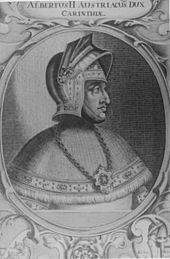
Countess Joanna of Pfirt (1300 – 15 November 1351) was Duchess consort of Austria and a member of the House of Habsburgby marriage. She was the elder daughter of Ulrich III of Pfirt and his wife, Joanna of Burgundy.
Joanna's maternal grandparents were Reginald of Burgundy and his wife Guillemette of Neufchâtel. Reginald was the son of Hugh III, Count of Burgundy and his wife Adelaide, Countess Palatine of Burgundy.
Adelaide was daughter of Otto I, Duke of Merania and his wife Beatrice II, Countess of Burgundy.
Beatrice was a daughter of Otto I, Count of Burgundy and his wife Margaret, Countess of Blois.
Margaret was a daughter of Theobald V, Count of Blois and Alix of France.
Alix herself was the daughter of Louis VII of France and his famous first wife, Eleanor of Aquitaine, who later married Henry II of England and was mother to two Kings of England, Richard and John.

Frederick V of Nuremberg (before 3 March 1333 – 21 January 1398) was a Burgrave (Burggraf) of Nuremberg, of the House of Hohenzollern.
He was the elder son of John II of Nuremberg and Elisabeth of Henneberg. From the death of his father in 1357, Frederick bore the title of Burgrave and so was responsible for the protection of the strategically significant imperial castle of Nuremberg. His zeal in the imperial cause led Charles IV to elevate him in 1363 to be the first Burgrave of royal rank.
Elisabeth of Meissen, Burgravine of Nuremberg (22 November 1329 – 21 April 1375) was the daughter of Frederick II, Margrave of Meissen and Mathilde of Bavaria and a member of the House of Wettin.
Margaret II of Avesnes (1311 – 23 June 1356) was Countess of Hainaut and Countess of Holland (as Margaret I) from 1345 to 1356. Margaret was the daughter of William I, Count of Hainaut, and his wife, Joan of Valois. On 26 February 1324 in Cologne she married Emperor Louis IV the Bavarian.

Ludwik I the Fair or Louis I the Fair also known as the Wise, the Right or of Brzeg (Brieg) (Polish: Ludwik I Sprawiedliwy,
Roztropny, Prawy or brzeski; c. 1321 – 6 /23 December 1398), was a Duke of Legnica two times: first during 1342–1345 (with his brother) and secondly during 1345–1346 (alone), and Duke of Brzeg from 1358. Also, he was regent of Legnica during 1364–1373.
He was the second son of Bolesław III the Generous, Duke of Legnica-Brzeg by his first wife, Margaret of Bohemia, daughter ofKing Wenceslaus II. Louis was the youngest son of the ducal couple who survived adulthood. The third and last son, Nikolaus was born and died in 1322, shortly before their mother.

Agnes (b. ca. 1321 – d. 7 July 1362), daughter of Duke Henry IV of Głogów-Żagań
Przemysław I Noszak (Polish: Przemysław I Noszak, Czech: Přemyslav I. Nošák, German: Przemislaus I. von Teschen; 1332/1336 – 23 May 1410), was a Duke of Cieszyn-Bytom-Siewierz from 1358 (during 1359–1368 he lost Siewierz and in 1405 also lost Bytom), from 1384 ruler over half of both Głogów and Ścinawa (except during 1404–1406) and since 1401 ruler over Toszek.
He was the third son of Casimir I, Duke of Cieszyn, by his wife Euphemia, daughter of Duke Trojden I of Czersk-Warsaw.

Bolko III of Strzelce (also known as of Opole; Polish: Bolko III Strzelecki (or Opolski); c. 1337 – 21 October 1382) was a Duke of Opole during 1356–1370 (with his brothers as co-rulers) and Duke of Strzelce from 1375 until his death.
He was the second son of Duke Bolko II of Opole by his wife Elisabeth, daughter of Duke Bernard of Świdnica.

Anna (b. ca. 1340? – d. 8 April 1378), who may have been daughter of Duke Jan I of Oświęcim
Siemowit III of Masovia (his name also rendered Ziemowit; c. 1320 – 1381) was a prince of Masovia and a co-regent (with his brother Casimir I of Warsaw) of the lands of Warsaw, Czersk, Rawa, Gostynin and other parts of Masovia.
Siemowit was the second son of Trojden I of Masovia and his wife Maria, daughter of Yuri I of Galicia.

Euphemia, daughter of Nicholas II of Opava
Wenceslas I, Duke of Saxe-Wittenberg (c. 1337 – 15 May 1388 in Celle) from the House of Ascania ruled from 1370 to 1388 and was a prince-elector of the Holy Roman Empire as well as Prince of Lüneburg. He was the son of Rudolf I and his 3rd wife, Agnes of Lindow-Ruppin.
In 1370 Wenceslas succeeded his brother Rudolf II. In 1376 he took part, as a prince-elector, in the election of Wenceslas as King of Germany and in 1377 stood by Emperor Charles IV in the Altmark. He was frequently active in the affairs of the empire on the side of the emperor. Charles IV granted Albert of Saxe-Wittenberg and his uncle Wenceslas I - and their house - the underlying entitlement to Brunswick and Lüneburg, but the two of them were unsuccessful in claiming this right through the Lüneburg War of Succession. In 1388 Wenceslas finally lost his claim at the battle of Winsen an der Aller.
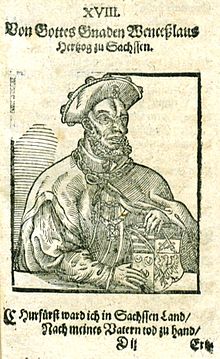
Cecilia of Carrara (d. 1435), daughter of Francis of Carrara (born 29 September 1325 in Padua – died 6 October 1393 in Monza), Count of Padua
Landgrave Balthasar of Thuringia (born 21 December 1336 in Weißenfels; died: 18 May 1406 at the Wartburg in Eisenach) wasMargrave of Meissen and Landgrave of Thuringia from the House of Wettin.
Balthasar was the second son of Frederick the Serious. After his father's death in 1349, his elder brother Frederick the Austereacted as regent and guardian for Balthasar and his brothers William I and Louis. After they came of age, William and Balthasar ruled joinly with Frederick.

Magnus (1324–1373), called Magnus with the Necklace (Latin: Magnus Torquatus) or Magnus II, was Duke of Brunswick-Lüneburg, ruling the Brunswick-Lüneburg principalities of Wolfenbüttel (colloquially also called Brunswick) and, temporarily,Lüneburg.
Magnus was the son of Magnus the Pious, Duke of Brunswick-Lüneburg (Wolfenbüttel)

Wartislaw VI of Pomarania (1345 – 13 June 1394) was a member of the House of Griffins. From 1365 to 1377, he ruledPomerania-Wolgast jointly with his brother Bogislaw VI. From 1377 until his death, he was the sole ruler of Pomerania-Barth.
He was the eldest son of the Duke Barnim IV of Pomerania-Wolgast-Rügen and his wife, Sophie of Werle.
Albert III, duke of Saxe-Lauenburg-Ratzeburg
Albrecht III., Herzog von Sachsen-Lauenburg-Ratzeburg
Margarethe of Brandenburg-Stargard
Margarethe von Brandenburg-Stargard
Bogislaw V (Polish: Bogusław, Latin: Bogislaus) (c. 1318 – 23 April 1374) was a Duke of Pomerania.[1]
Eldest son of Duke Wartislaw IV and Elisabeth of Lindow-Ruppin
Adelheid of Brunswick-Grubenhagen. She was a daughter of Ernest I, Duke of Brunswick-Grubenhagen and Adelheid of Everstein.
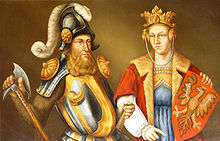
Count Henry II of Holstein-Rendsburg (nickname Iron Henry; c. 1317 – c. 1384) was count of Holstein-Rendsburg and pledge lord of Southern Schleswig. He ruled jointly with his younger brother, Count Nicholas (d. 1397).
Henry was the elder son of Count Gerhard III and Sophia of Werle.

Ingeborg (d. c. 1398), daughter of Albert II, Duke of Mecklenburg-Schwerin.

Eitel Friedrich von Hohenzollern 1401-39 Friedrich XI, Graf von Hohenzollern-Hechingen y Adelheid von Fürstenberg-Villingen
Ursula von Räzüns 1404-77 Heinrich VI von Räzüns y Verena von Stoffeln
Johann IV von Werdenberg-Heiligenberg, Graf von Werdenberg-Heiligenberg 1416-60 Eberhard III, Graf von Werdenberg-Trochtelfingen y Anna von Zimmern
Elisabeth von Württemberg 1412-60 Eberhard III, count of Württemberg yElisabeth von Nürnberg, Gräfin von Württemberg
Barnim VIII, Duke of Pomerania (between 1405 and 1407 – between 15 and 19 December 1451) [1] was Duke ofPomerania–Wolgast–Barth.
Barnim VIII was the son of Duke Wartislaw VIII of Pomerania-Wolgast.
Anna of Wunstorf

Jacob I of Baden (15 March 1407, Hachberg – 13 October 1453, Mühlburg), was Margrave of Baden-Baden from 1431 to 1453.
He was the elder son of Bernard I, Margrave of Baden-Baden and his second wife Anna of Oettingen. Jacob I was a man of deep religious beliefs, well known as a founder of churches. He founded the monastery at Fremersberg and was a major benefactor of the Stiftskirche at Baden-Baden.
Philipp I "der äldere" von Katzenelnbogen, Graf von Katzenelnbogen 1402-79 Johann IV, Graf von Katzenelnbogen y Anna von KatzenelnbogenAnna von Württemberg 1408-71 Eberhard IV, count of Württemberg yHenriette de Montbèliard d'Orbe-Montfaucon
| ||||||||||||||||||||||||||


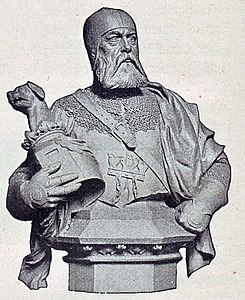


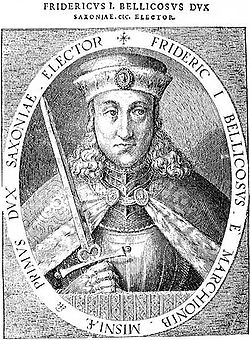















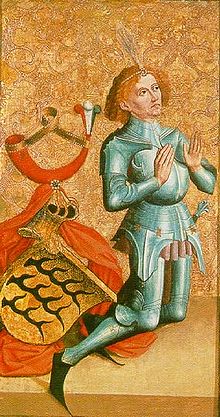



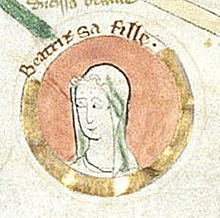





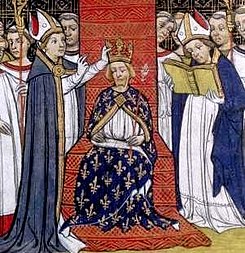


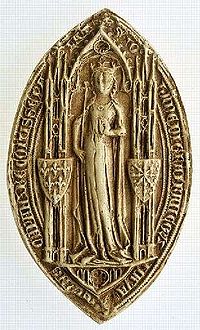

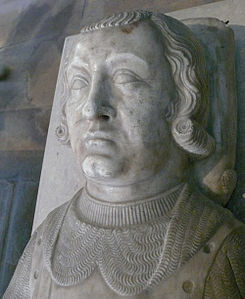









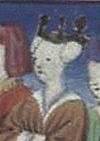
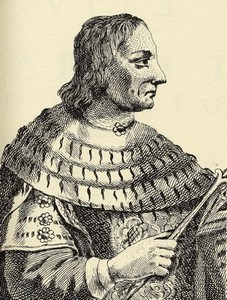
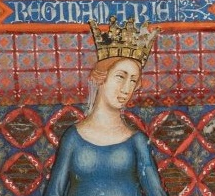
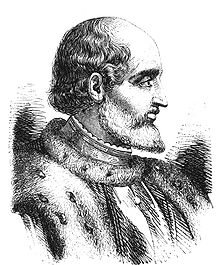
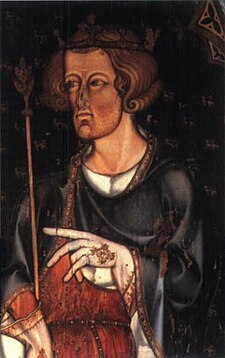
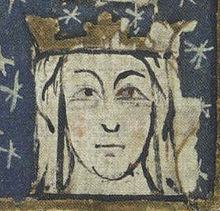
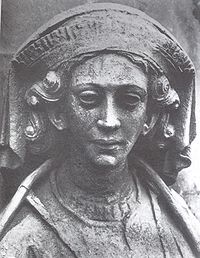
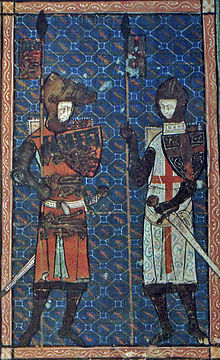




No hay comentarios:
Publicar un comentario